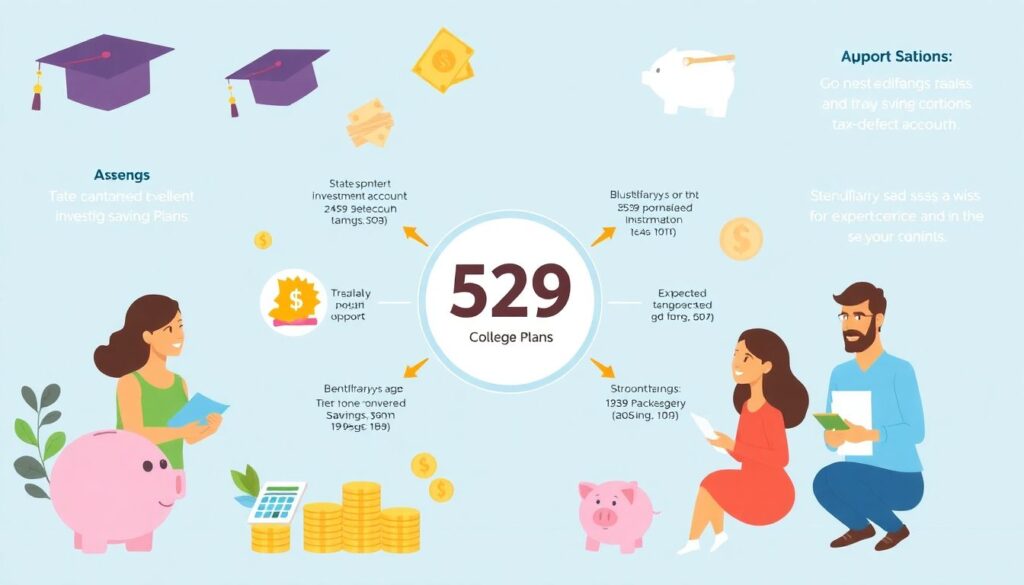Overview of Tax-Advantaged Education Savings
Tax-advantaged saving for education refers to financial strategies and instruments designed to help families accumulate funds for educational expenses while receiving preferential tax treatment. These methods reduce the tax burden on investment growth, withdrawals, or contributions. As of 2025, the most commonly used vehicles in the United States include 529 Plans, Coverdell Education Savings Accounts (ESAs), and Education Savings Bonds. Each tool functions within a specific regulatory framework and has distinct eligibility, contribution limits, and tax implications.
Historical Context and Legislative Evolution
The concept of tax-advantaged educational savings began gaining traction in the 1980s, during a period of rising tuition costs and increasing emphasis on higher education. The Education IRAs, later rebranded as Coverdell ESAs, were introduced in 1997 under the Taxpayer Relief Act. These accounts allowed modest contributions with tax-free growth and withdrawals for qualified educational expenses.
Section 529 of the Internal Revenue Code, enacted in 1996, laid the foundation for the 529 Plan system, which was expanded significantly by the Economic Growth and Tax Relief Reconciliation Act of 2001. The 2017 Tax Cuts and Jobs Act further expanded 529 eligibility to include up to $10,000 annually for K–12 tuition. In 2020, the SECURE Act allowed 529 funds to be used for student loan repayment and registered apprenticeship programs. These legislative developments reflect a growing national priority on education affordability and financial preparedness.
Essential Tools and Account Types

Several financial instruments facilitate tax-advantaged education saving. The choice of tool depends on factors such as the beneficiary’s age, anticipated expenses, and the account owner’s financial goals.
– 529 College Savings Plans: State-sponsored investment accounts offering tax-deferred growth and tax-free withdrawals for qualified education expenditures. Contributions are made with after-tax dollars, but many states offer deductions or credits.
– Coverdell ESAs: Accounts allowing up to $2,000 in annual contributions per beneficiary. Earnings grow tax-free if used for qualified education expenses, including K–12 and post-secondary education.
– Education Savings Bonds: U.S. savings bonds (Series EE or I) may be redeemed tax-free for qualified educational expenses, subject to income restrictions.
Step-by-Step Implementation Process
Successful deployment of tax-advantaged savings strategies necessitates a structured approach. Investors must align their objectives with account capabilities while adhering to regulatory criteria.
1. Assess Education Funding Needs: Estimate future costs using inflation-adjusted tuition growth rates and project timelines based on the child’s age and educational aspirations.
2. Select the Appropriate Account: Evaluate eligibility, contribution limits, investment flexibility, and state tax benefits. For instance, high-income households may prefer 529s over Coverdell ESAs due to fewer income-based restrictions.
3. Open and Fund the Account: Choose a plan provider, complete enrollment documentation, and initiate funding. Many 529 plans allow automated contributions and gift portals to encourage family participation.
4. Allocate Investments Strategically: Utilize age-based or custom portfolios depending on risk tolerance and investment horizon. Regular rebalancing helps align asset allocation with evolving goals.
5. Withdraw with Compliance: Ensure distributions are utilized exclusively for qualified expenses, including tuition, fees, books, and housing. Maintain documentation to substantiate IRS reporting.
Troubleshooting and Risk Management
Despite their advantages, tax-advantaged education savings tools can encounter operational or regulatory challenges. Proactive management is essential to avoid unintended tax consequences or funding shortfalls.
– Non-Qualified Withdrawals: Distributions not applied toward eligible expenses incur income tax on earnings and a 10% penalty. Mitigate this risk by tracking expenses diligently.
– Overfunding or Excess Contributions: Contributions exceeding annual limits may be subject to excise taxes. Monitor account activity and adjust contributions accordingly.
– Beneficiary Changes: If the original student does not use the funds, 529 plan owners can change the beneficiary to another qualified family member without penalty, preserving tax benefits.
Common issues and mitigation tactics include:
– Market Volatility: Employ diversified investment strategies and consider moving to conservative portfolios as the education start date approaches.
– State-Specific Rules: Since 529 plans are state-administered, review residency requirements and portability options before enrolling.
Key Considerations for 2025 and Beyond

As education costs continue to rise and policy evolves, tax-advantaged savings remain a critical component of financial planning. Recent legislative proposals in 2024 aimed to further expand qualified expenses and increase 529 contribution flexibility. Families should remain informed of legal updates and periodically review their strategy with a certified financial planner to optimize outcomes.
In conclusion, leveraging tax-advantaged accounts for education funding offers both financial efficiency and long-term security. With diligent planning, appropriate tool selection, and ongoing oversight, families can navigate the complexities of educational financing while minimizing tax exposure.

